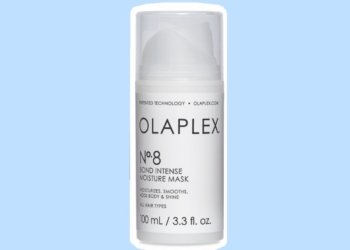Saunas are a popular way to relax, detoxify, and improve your health. But did you know that there are different types of saunas, and each one has its benefits and drawbacks? In this article, we will compare wet sauna vs dry sauna, and help you decide which one is best for you.
A wet sauna, also known as a steam room, is a sauna that uses hot steam to create a humid environment. A dry sauna, on the other hand, is a sauna that uses dry heat, usually from an electric heater or a wood stove. The main difference between wet sauna vs dry sauna is the temperature and humidity level.
A wet sauna typically has a lower temperature (around 40°C to 50°C) but a higher humidity level (around 100%), while a dry sauna has a higher temperature (around 80°C to 100°C) but a lower humidity level (around 10% to 20%). According to a recent study, both types of saunas can have positive effects on your cardiovascular health, blood pressure, and stress levels.
Wet Sauna vs Dry Sauna
The choice between wet sauna vs dry sauna depends on your personal preference, health condition, and goals. Here are some factors to consider:
- Skin Type: If you have dry or sensitive skin, you may prefer a wet sauna, as it can hydrate and nourish your skin. If you have oily or acne-prone skin, you may prefer a dry sauna, as it can cleanse and purify your skin.
- Respiratory Condition: If you have a respiratory condition, such as asthma, allergies, or sinusitis, you may benefit from a wet sauna, as it can clear your airways and ease your breathing.
- Heat Tolerance: If you have a low heat tolerance, you may find a wet sauna more comfortable, as it has a lower temperature and a more gentle heat. If you have a high heat tolerance, you may enjoy a dry sauna more, as it has a higher temperature and a more intense heat.

Benefits of Wet Sauna
A wet sauna can offer you the following benefits:
Hydration
A wet sauna can help you hydrate your skin and clear your pores. The steam can moisturize your skin and remove dirt, oil, and bacteria from your pores. This can improve your skin texture, tone, and elasticity, and prevent acne and infections.
Respiratory Relief
A wet sauna can also help you breathe easier and relieve congestion. The steam can loosen the mucus in your lungs and sinuses, and help you expel it. This can reduce the symptoms of allergies, asthma, bronchitis, and colds.
Relaxation
A wet sauna can also help you relax your muscles and calm your mind. The steam can soothe your muscles and joints, and ease the pain and stiffness caused by arthritis, fibromyalgia, and injuries. The steam can also lower your cortisol levels, and increase your endorphins and serotonin levels. This can improve your mood, sleep quality, and mental health.
Benefits of Dry Sauna
A dry sauna can offer you the following benefits:
Detoxification
A dry sauna can help you detoxify your body and burn calories. The dry heat can make you sweat more, and help you eliminate toxins, such as heavy metals, alcohol, and nicotine, from your body. Sweating can also increase your metabolism, and help you burn more calories and fat.
Immunity
A dry sauna can also help you boost your immune system and fight infections. The dry heat can raise your body temperature, and stimulate your white blood cells and antibodies. This can enhance your immune response, and help you fight off viruses, bacteria, and fungi.
Pain Relief
A dry sauna can also help you relieve pain and reduce inflammation. The dry heat can increase your blood circulation, and deliver more oxygen and nutrients to your tissues. This can speed up your healing process, and reduce the inflammation and swelling caused by injuries, infections, and chronic conditions.
How to Use a Sauna Safely and Effectively
Whether you choose a wet sauna or a dry sauna, you should follow these tips to use a sauna safely and effectively:
- Consult your doctor before using a sauna, especially if you have a medical condition, such as heart disease, diabetes, or pregnancy.
- Drink plenty of water before, during, and after using a sauna, to prevent dehydration and electrolyte imbalance.
- Start with a short session (10 to 15 minutes), and gradually increase the duration and frequency as you get used to the heat.
- Take breaks between sessions, and cool down with a shower, a dip in a pool, or a cold towel.
- Wear loose and comfortable clothing, or a towel, and remove any jewelry or metal objects.
- Avoid alcohol, drugs, and caffeine, as they can dehydrate you and affect your blood pressure and heart rate.
- Avoid eating a large meal before or after using a sauna, as it can interfere with your digestion and blood circulation.
- Listen to your body, and stop using a sauna if you feel dizzy, nauseous, or unwell.
Conclusion
Saunas are a great way to relax and improve your health. But there are different types of saunas, and each one has its pros and cons. Wet sauna vs dry sauna is a matter of personal preference, but you should also consider your skin type, respiratory condition, and heat tolerance. Whichever type of sauna you choose, make sure you use it safely and effectively, and enjoy the benefits.
FAQ
What are the risks of using a sauna?
Using a sauna can have some risks, such as dehydration, overheating, low blood pressure, and skin irritation. These risks can be minimized by following the safety tips mentioned above, and consulting your doctor before using a sauna.
How often should you use a sauna?
The frequency of using a sauna depends on your health condition, goals, and tolerance. Some people use a sauna once a week, while others use it daily. A general guideline is to use a sauna 2 to 3 times a week, for 10 to 20 minutes per session.
What are the benefits of alternating between wet sauna and dry sauna?
Alternating between wet sauna and dry sauna can give you the best of both worlds, as you can enjoy the benefits of both types of heat and humidity. It can also stimulate your blood vessels, and improve your circulation and detoxification. However, you should be careful not to overdo it, and limit your total sauna time to 30 minutes or less.



































